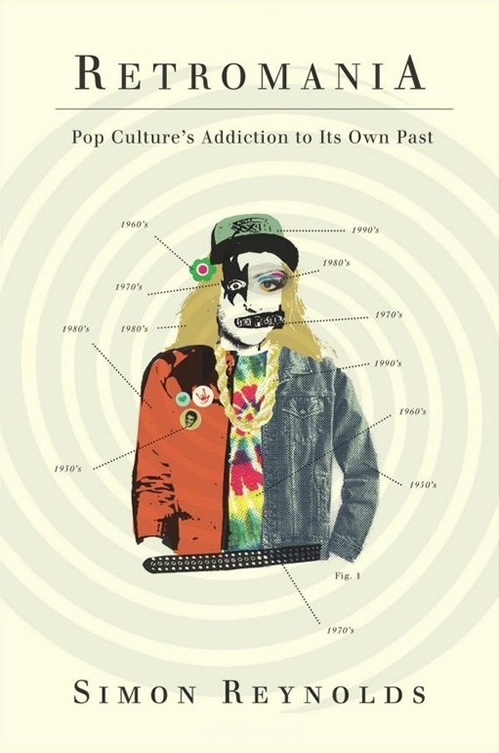
another book (besides mark fisher’s “ghosts of my life”) we recommend because of its stimulating and in the same time offending richness of disparate ideas on music and the development of music culture from the 60ties until now.
below, we present a couple of quotes that we recognise as reynolds’ conclusions. (not that we necessarily agree -)
>>> see also basslines column #1: poltergeists
Reynolds, Simon (2011). Retromania. Pop Culture’s Addiction to Its Own Past. New York: Faber and Faber, Inc.
given that i enjoy many aspects of retro, why do i still feel deep down that it is lame and shameful? (p. 403)
…
thinking about the first ten years after the future arrived (the year 2000), the word that springs to my mind is “flat”. the nineties felt like this long, sustained ascent, what with the internet and the info-tech boom, techno rave and its associated drugs. but the 2000s turned out to be a plateau. oh, there was a bustle and buzz, a fast turnover of new names and micro-trends. casting an eye back over the soundscape of the 2000s as the era drew to a close, though, it seemed like nothing momentous had happened. worse, it was a struggle to pinpoint what defined the era as a separate era musically. in his 2010 polemic you are not a gadget, jaron lanier waspishily threw down the challenge: “play me some good music that is characteristic of the late 2000s as opposed to the late 1990s.” it’s hard to see what anyone could come up with in response. this deficit in newness can be seen across the spectrum, from semi-popular fringes to the money pumping heart of mainstream. (pp. 404f.)
…
how do the 2000s measure up? even the most generous assessment of pop in the first decade of the new millenium must surely conclude that nearly all the developments were either tweaks to established genres (…) or archive-raiding styles (…). two of the few arguable exeptions were grime and dubstep: exciting sounds, certainly, but so far they have proved to be contained explosions within the uk’s post-rave tradition, exept for a few watered-down crossovers into chart pop terrain with acts lik thinchy strider and magnetic man. (p. 407)
…
part of the problem is that the musical landscape has grown cluttered. most of the styles of music and subcultures that have ever existed are still with us. from goth to drum’n’bass, metal to trance, house to industrial, these genres are permanent fixtures on the menue, drawing new recruits every year. nothing seems to wither and die. this hampers the emergence of new things. (p. 407)
…
but the problem wasn’t just the failure of new movements and mega-genres to emerge, or the sluggishness of the established ones. it was the way that recycling and recursion became structural features of the music scene, substituting novelty (difference from what immediately proceded) for genuine innovation. it seemed like everything that ever was got its chance to come back into circulation at some point during the 2000s. (p. 408)
…
the irony of sixties nostalgia is that the very idea that pop music should be challenging and perpetually progressing comes from the sixties. it’s because the sixties moved so fast and always looked to the future that we judge today’s stasis and retrospection harshly. the decade set the bar impossibly high. (pp. 410f.)
…
i remember the future-rush. (…) the future-rush is different from the thrill of encountering a true original (the charisma-glow of a unique personality, the style of an utterly individual voice and way with words – a morrissey, björk, jay-z, dizzie rascal). this sensation is electric but impersonal; it’s about new forms, not new faces; it’s a much purer, harder hit. it’s the same scary-euphoric rush that the best science fiction gives: the vertigo of limitlessness.
i still believe the future is out there. (p. 428)
